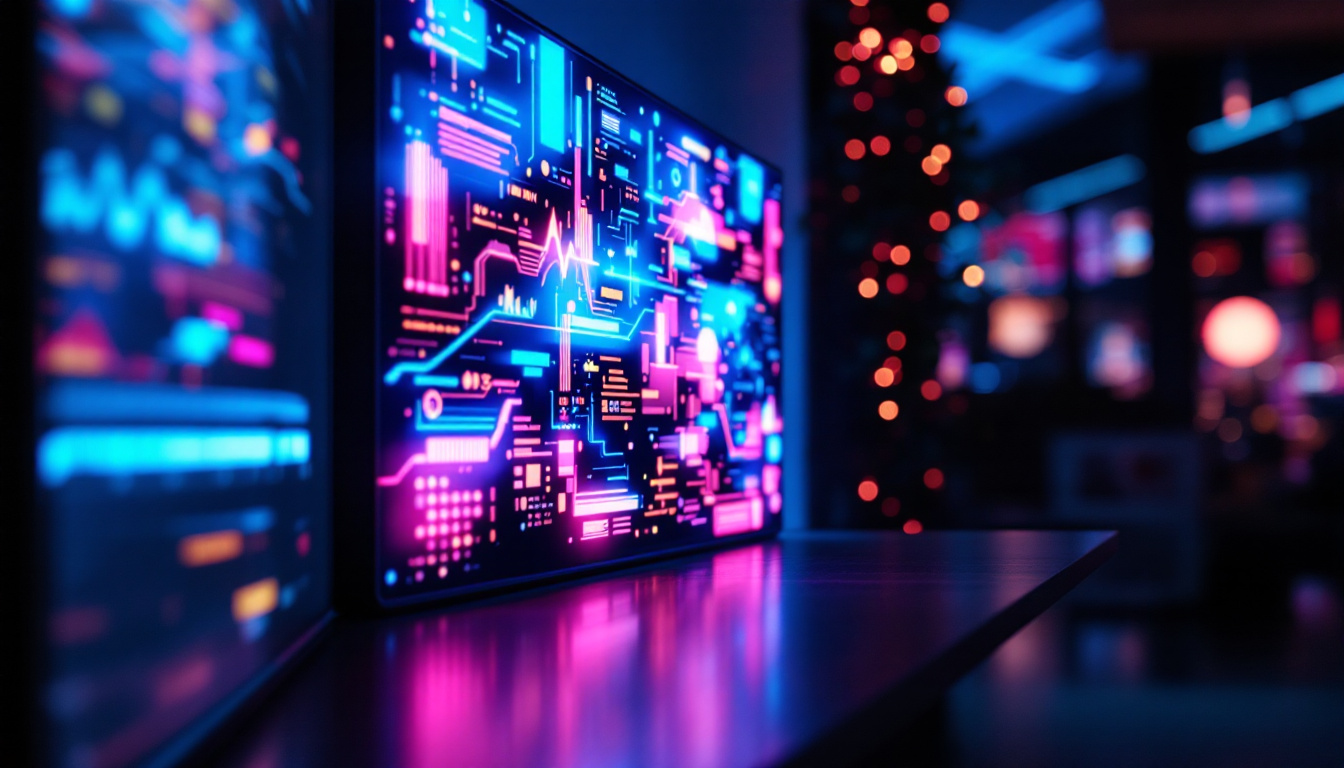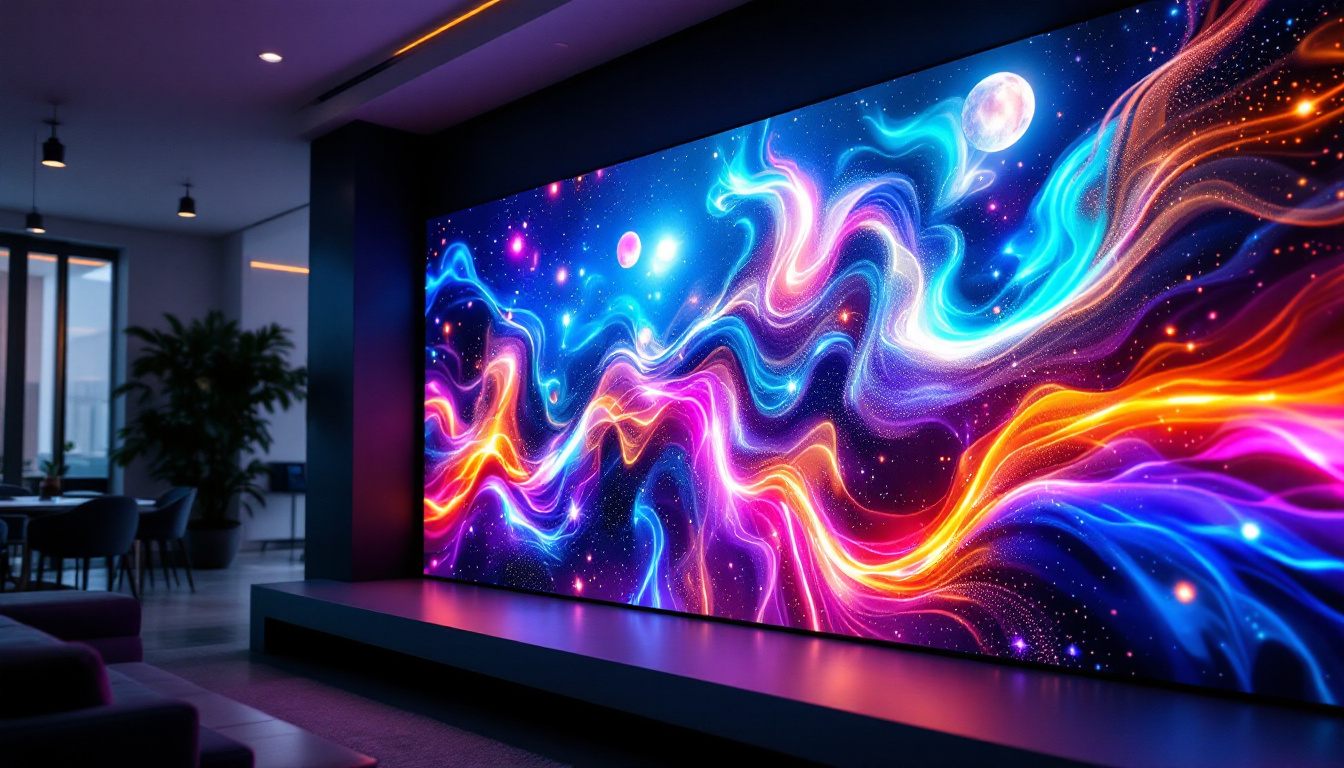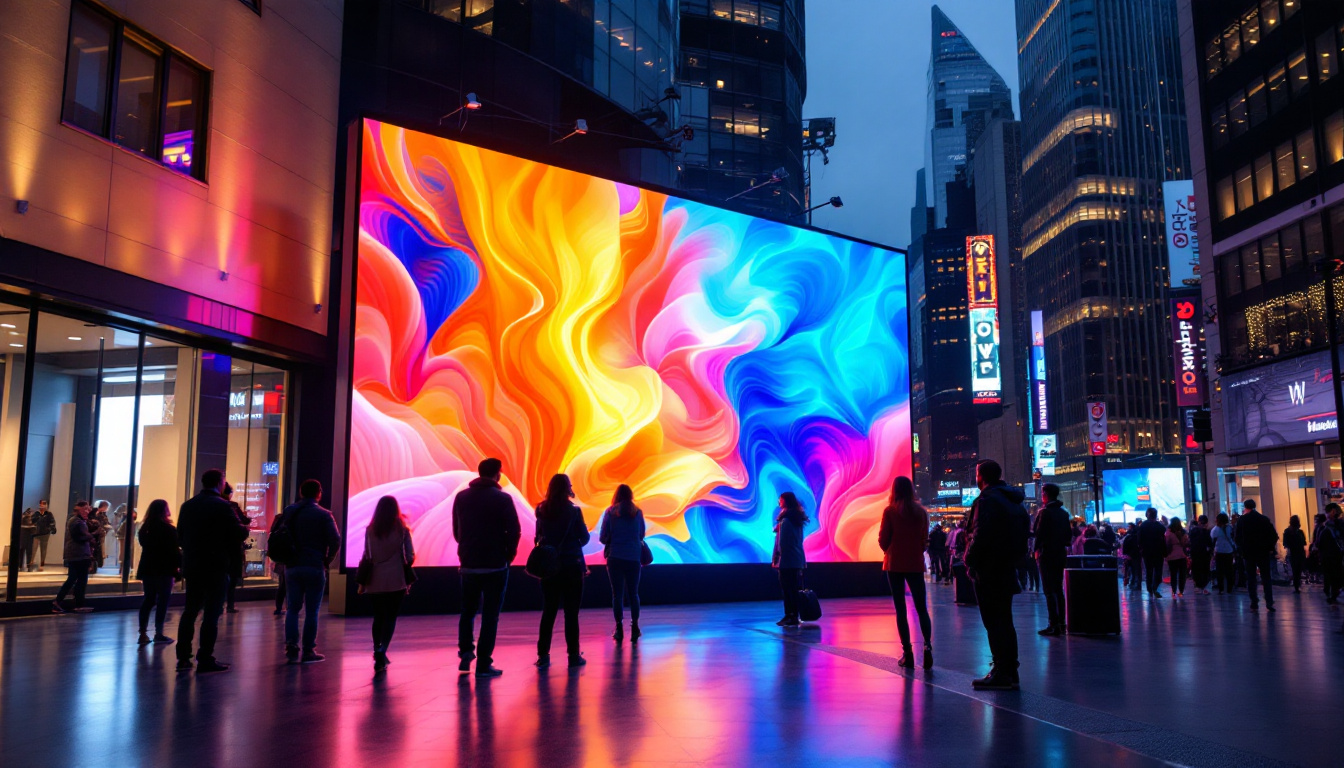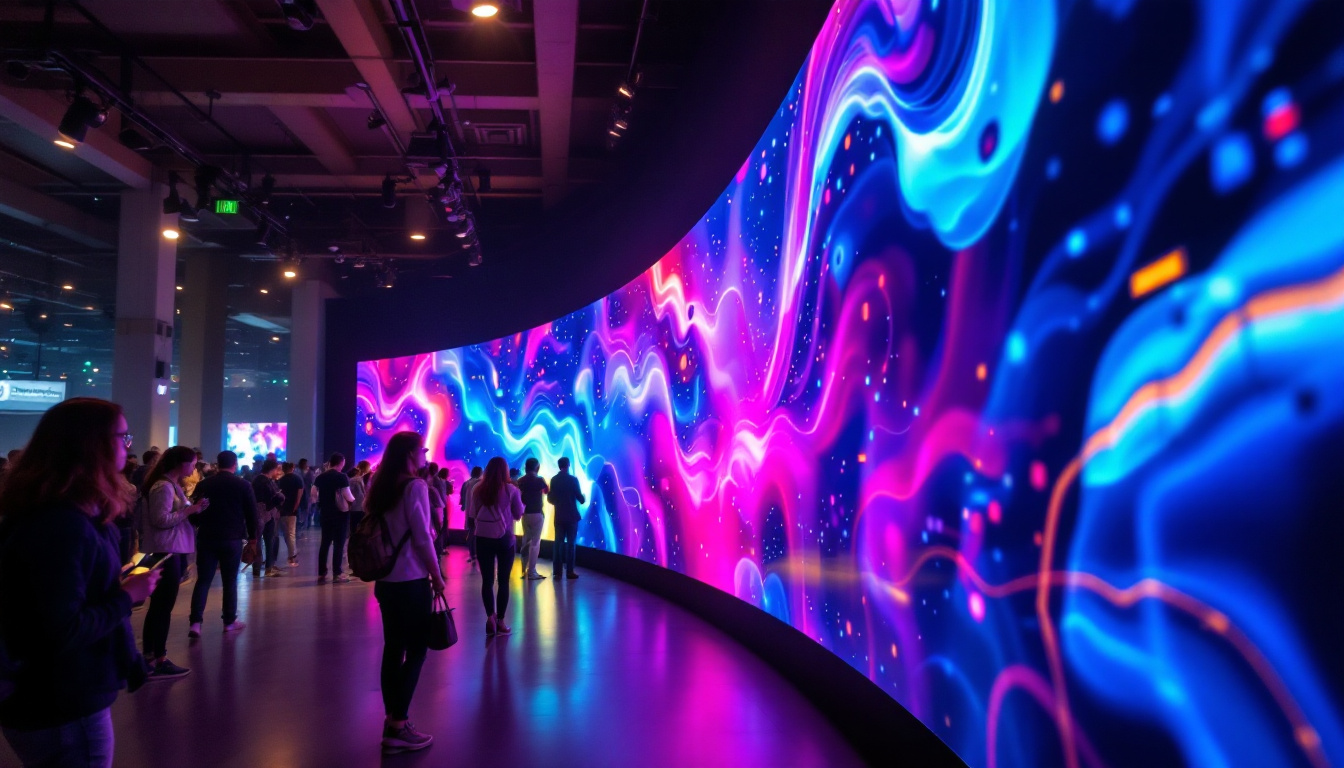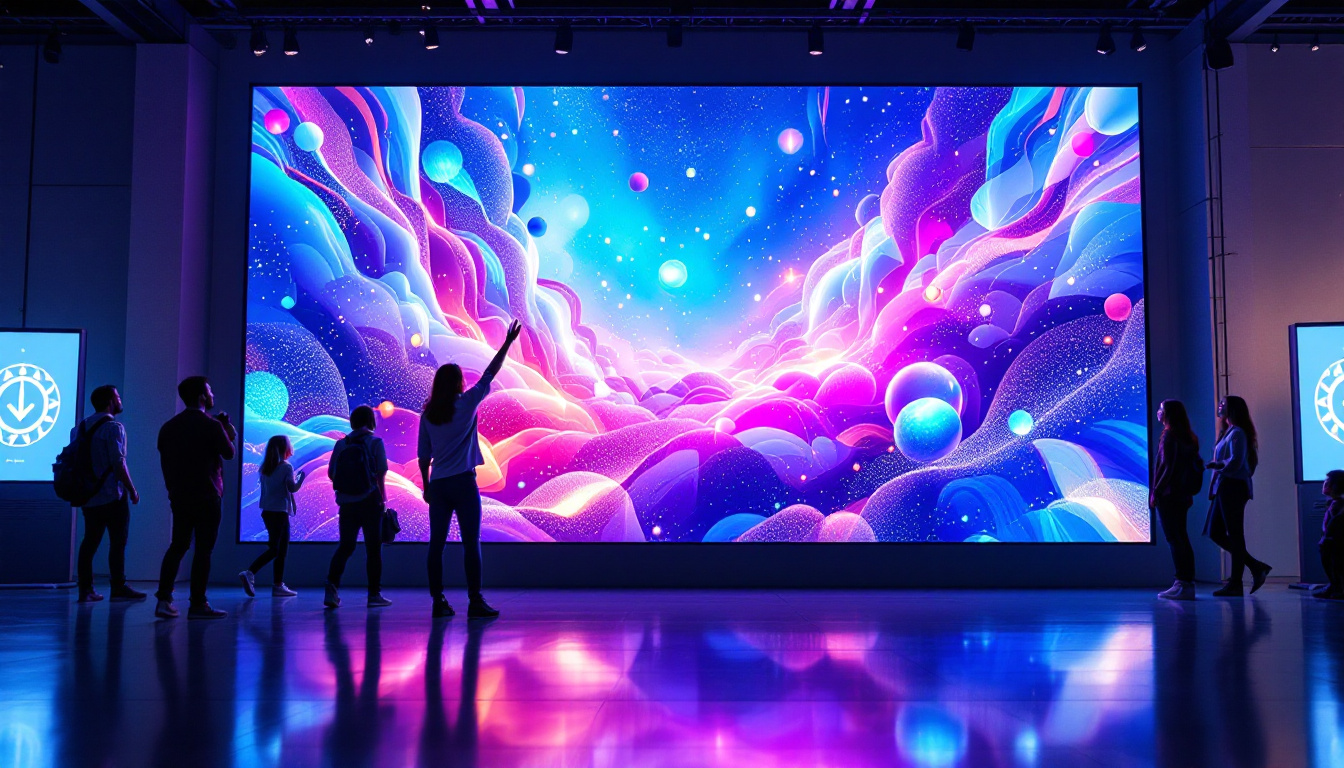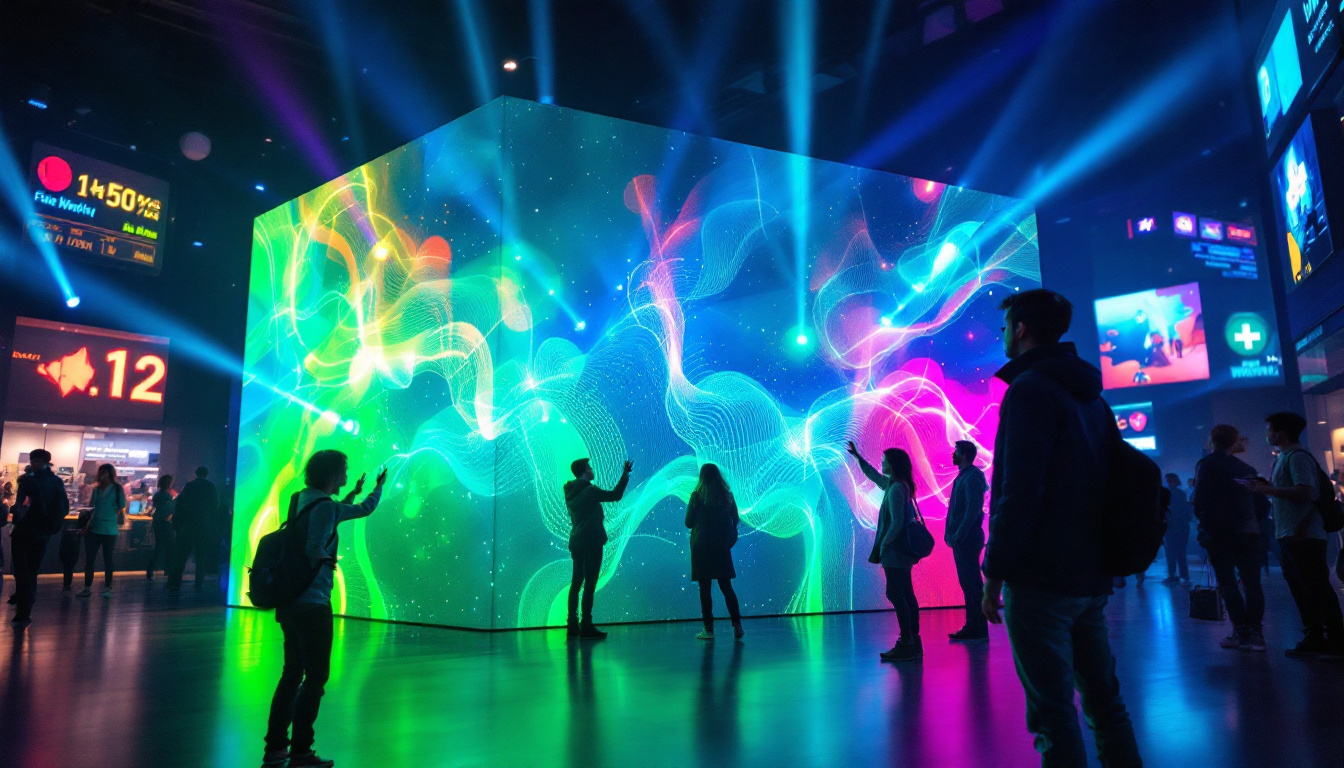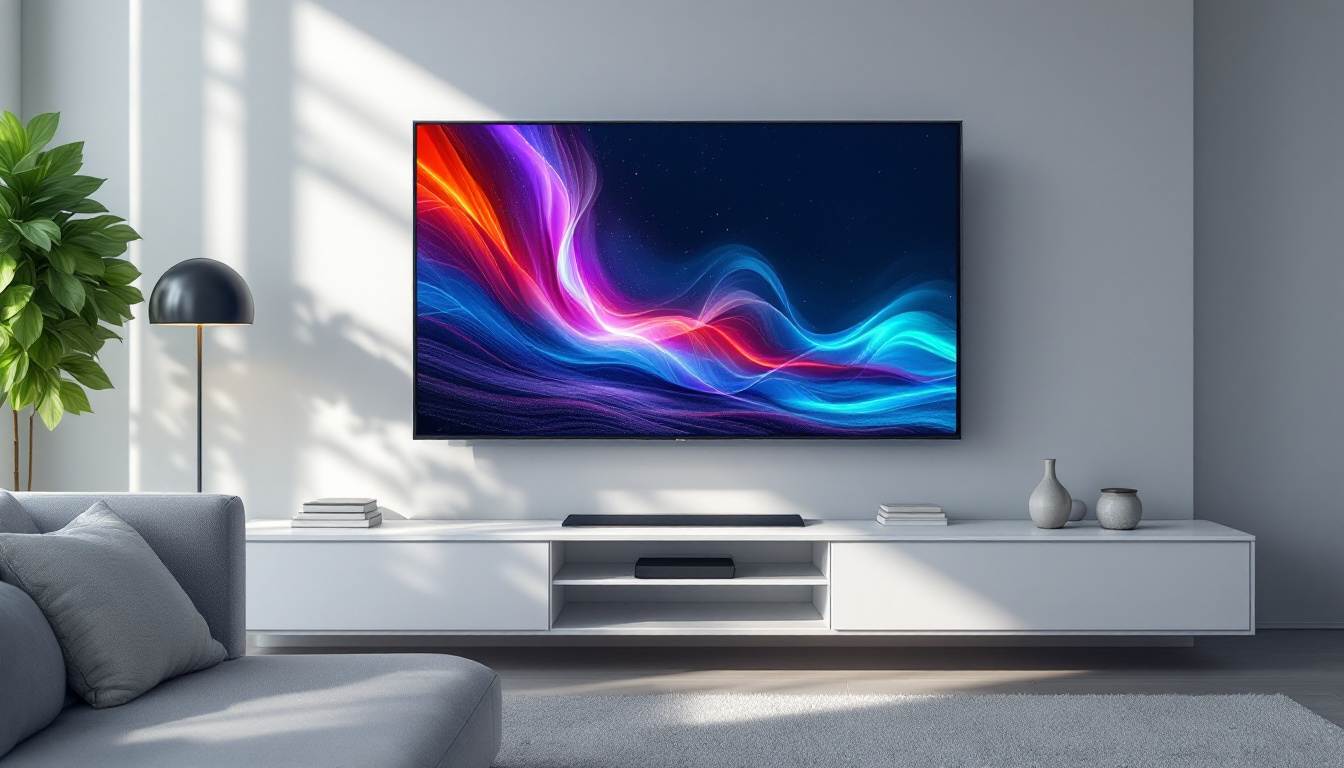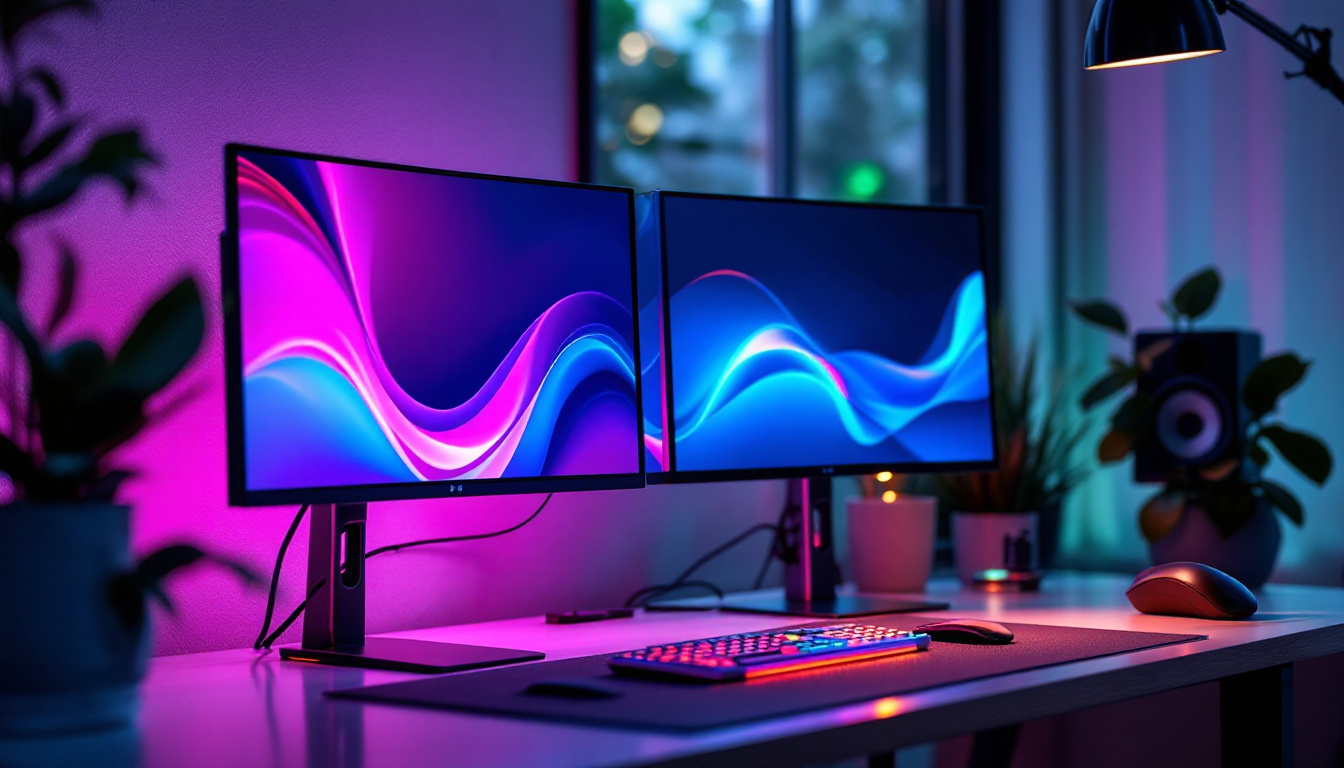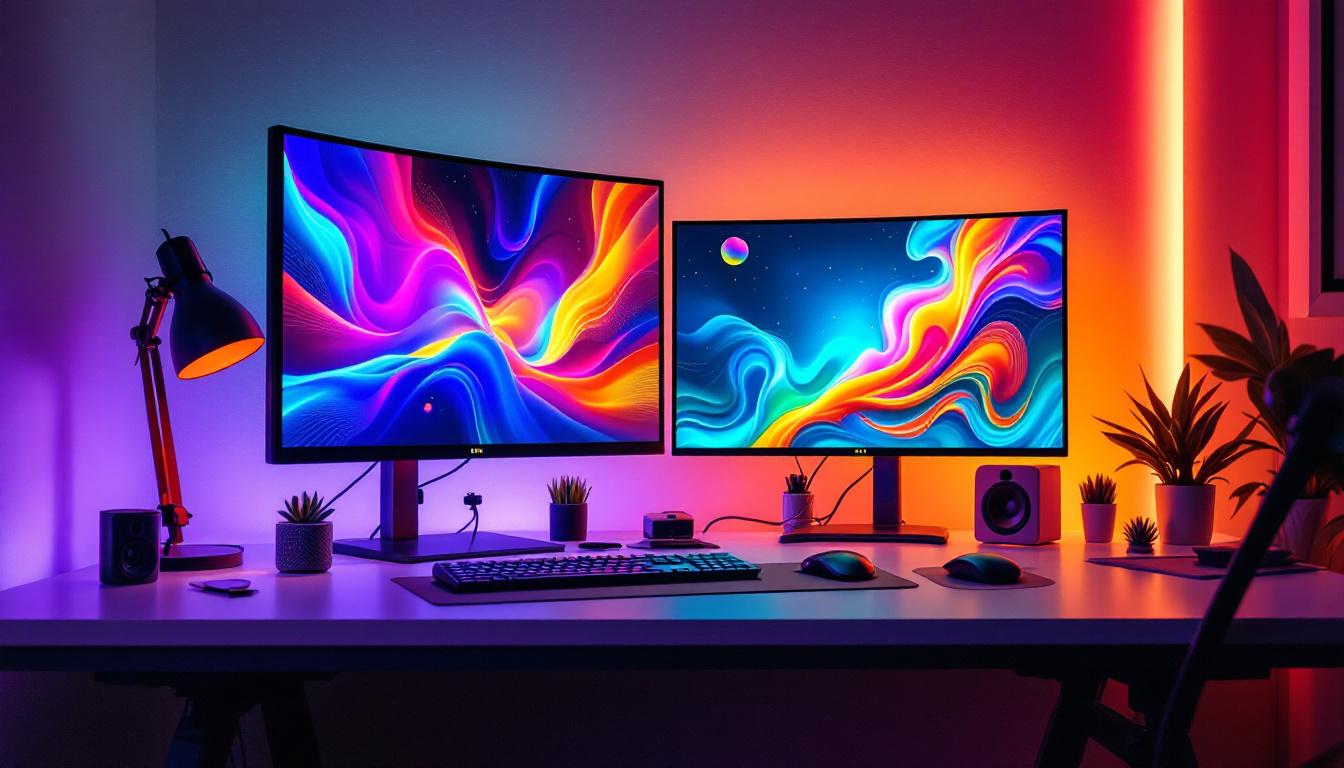In the ever-evolving world of technology, LED displays have emerged as a cornerstone of modern visual communication. Among the various types of LED displays, soft screens have gained significant traction due to their versatility and unique characteristics. This article delves into the intricacies of soft screens, exploring their features, applications, and the technology that underpins them.
What is a Soft Screen?
A soft screen, often referred to as a flexible LED display, is a type of LED screen that can be bent, curved, or shaped to fit various surfaces. Unlike traditional rigid LED displays, soft screens are designed to be lightweight and adaptable, making them ideal for a wide range of applications, from advertising to artistic installations.
Characteristics of Soft Screens
Soft screens are distinguished by several key characteristics that set them apart from conventional displays. Firstly, their flexibility allows for creative designs that can conform to different shapes and surfaces. This adaptability is particularly useful in environments where space is limited or where traditional displays would be impractical.
Secondly, soft screens often feature high-resolution capabilities, providing vibrant colors and sharp images. This quality is essential for capturing audience attention in crowded spaces, such as shopping malls or concert venues. Furthermore, many soft screens are modular, meaning they can be combined to create larger displays, enhancing their versatility even further.
How Soft Screens Work
The technology behind soft screens is rooted in LED (Light Emitting Diode) technology. Each pixel in a soft screen is made up of tiny LEDs that emit light when an electric current passes through them. These pixels are arranged in a grid, and by controlling the intensity of the current, the display can produce a wide range of colors and brightness levels.
Additionally, soft screens often utilize a flexible circuit board, which allows the display to maintain its shape while still delivering high-quality visuals. This innovation is what enables soft screens to be both lightweight and durable, making them suitable for various environments and applications.
Applications of Soft Screens
The versatility of soft screens has led to their adoption in numerous fields. From advertising to entertainment, these displays have found a place in many industries. Below are some of the most common applications of soft screens.
Advertising and Marketing
One of the most prominent uses of soft screens is in advertising. Brands leverage the flexibility of these displays to create eye-catching installations that can be tailored to specific locations. For instance, a soft screen can be wrapped around a column or integrated into a unique architectural feature, drawing attention in a way that traditional billboards cannot.
Moreover, the ability to change content easily allows advertisers to keep their messages fresh and relevant. This adaptability is particularly beneficial in high-traffic areas, where the target audience is constantly changing.
Events and Entertainment
In the realm of events and entertainment, soft screens have revolutionized stage design. They can be used to create immersive environments that enhance the audience’s experience. For example, concerts and theatrical performances often incorporate soft screens as backdrops, providing dynamic visuals that complement the performance.
Additionally, soft screens can be used in exhibitions and trade shows, where they serve as interactive displays that engage visitors. Their flexibility allows for creative setups that can be adjusted to fit different booth designs, making them a popular choice among exhibitors.
Architectural Integration
Architects and designers are increasingly incorporating soft screens into their projects. These displays can be seamlessly integrated into building facades or interior designs, creating stunning visual effects that enhance the aesthetic appeal of a space. The ability to customize shapes and sizes means that soft screens can be tailored to fit any design vision.
Furthermore, soft screens can serve functional purposes, such as displaying information or advertisements, while also contributing to the overall design of a building. This dual functionality makes them an attractive option for modern architectural projects.
Advantages of Soft Screens
Soft screens offer several advantages over traditional LED displays, making them a compelling choice for various applications. Understanding these benefits can help businesses and individuals make informed decisions when considering display options.
Flexibility and Customization
The most significant advantage of soft screens is their flexibility. This feature allows for creative designs that can adapt to any space, whether it’s a curved wall or an unconventional installation. The ability to customize the shape and size of the display means that soft screens can be tailored to meet specific project requirements, ensuring that they fit seamlessly into their environment.
This level of customization is particularly valuable in creative industries, where visual impact is paramount. Soft screens can be designed to enhance the overall aesthetic of a space, making them a preferred choice for artists and designers.
Lightweight and Portable
Soft screens are generally lighter than traditional LED displays, which makes them easier to transport and install. This portability is a significant advantage for events and exhibitions, where setup and teardown times are critical. The lightweight nature of soft screens also reduces the structural requirements for mounting, allowing for more versatile installation options.
Additionally, the ease of installation can lead to cost savings, as less time and labor are required to set up the display. This efficiency is particularly beneficial for businesses that frequently change their display setups.
High-Quality Visuals
Despite their flexible nature, soft screens do not compromise on visual quality. Many soft screens offer high resolution, vibrant colors, and excellent brightness levels, ensuring that content is displayed clearly and attractively. This quality is essential for capturing audience attention and delivering impactful messages.
Moreover, advancements in LED technology continue to enhance the performance of soft screens, making them a reliable choice for high-stakes environments where visual clarity is crucial.
Challenges and Considerations
While soft screens offer numerous advantages, they also come with certain challenges that potential users should consider. Understanding these limitations can help in making informed decisions regarding their use.
Cost Factors
One of the primary challenges associated with soft screens is their cost. While prices have been decreasing as technology advances, soft screens can still be more expensive than traditional LED displays. This higher initial investment may be a barrier for some businesses, particularly smaller enterprises with limited budgets.
However, it is essential to weigh this cost against the potential benefits, such as increased engagement and adaptability. In many cases, the long-term advantages of using soft screens can justify the initial expenditure.
Durability and Maintenance
Although soft screens are designed to be durable, they may not be as robust as traditional LED displays. Their flexible nature can make them more susceptible to damage if not handled carefully. This aspect is particularly important for installations in high-traffic areas or environments where physical contact is likely.
Regular maintenance is also essential to ensure optimal performance. Keeping the display clean and addressing any technical issues promptly can help extend the lifespan of a soft screen. Users should be prepared for ongoing maintenance to maximize their investment.
Technical Limitations
Another consideration is the technical limitations of soft screens. While many models offer high resolution and vibrant colors, not all soft screens are created equal. It is crucial to research and select a high-quality product that meets specific performance requirements.
Additionally, the technology is still evolving, and users should stay informed about advancements in soft screen technology to ensure they are utilizing the best options available. This ongoing education can help users make the most of their investment and keep their displays up to date.
The Future of Soft Screens
The future of soft screens looks promising, with ongoing advancements in technology and increasing demand across various industries. As manufacturers continue to innovate, we can expect to see even more versatile and high-performing soft screens in the market.
Emerging Technologies
Emerging technologies, such as microLED and OLED, are likely to play a significant role in the evolution of soft screens. These technologies offer the potential for even higher resolutions, improved color accuracy, and greater energy efficiency. As these innovations are integrated into soft screen designs, users can look forward to enhanced performance and capabilities.
Furthermore, the development of smart soft screens, equipped with interactive features and connectivity options, could open up new possibilities for user engagement and content delivery. This evolution will likely lead to more dynamic and immersive experiences for audiences.
Expanding Applications
As soft screens become more widely adopted, their applications are expected to expand beyond traditional uses. Industries such as education, healthcare, and transportation may increasingly leverage soft screens for information display and interactive experiences.
For instance, educational institutions could utilize soft screens for interactive learning environments, while healthcare facilities might employ them for patient information and wayfinding. The adaptability of soft screens makes them suitable for a wide range of contexts, and their potential applications are limited only by the imagination.
Conclusion
Soft screens represent a significant advancement in display technology, offering flexibility, high-quality visuals, and innovative design possibilities. Their versatility has led to widespread adoption across various industries, from advertising to architecture. While challenges such as cost and durability exist, the benefits often outweigh these limitations.
As technology continues to evolve, the future of soft screens looks bright, with emerging technologies and expanding applications on the horizon. Whether for creative installations, dynamic advertising, or immersive experiences, soft screens are poised to play a pivotal role in shaping the visual landscape of the future.
Discover the Future of Visual Displays with LumenMatrix
Ready to embrace the innovative world of soft screens and transform your visual communication? LumenMatrix, a pioneer in LED display technology, invites you to explore our extensive range of LED display solutions. From Indoor and Outdoor LED Walls to Custom and All-in-One Displays, our products are designed to captivate your audience and amplify your message. Experience the revolution in digital signage with LumenMatrix and take the first step towards creating unforgettable visual experiences. Check out LumenMatrix LED Display Solutions today and see your vision come to life.



